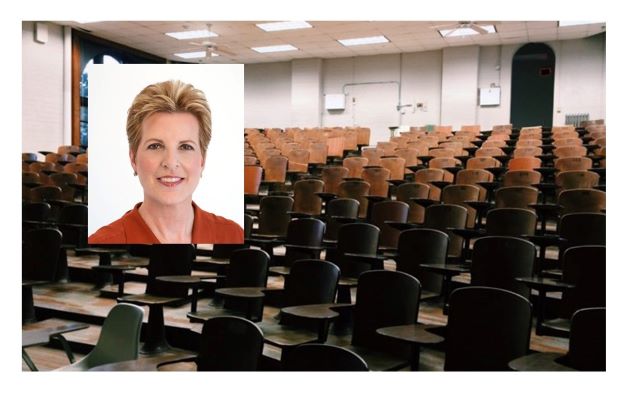You are an industry expert with many years of service and in the COVID-19 pandemic induced recession you have lost your job. You may be tempted to monetize your long standing expertise in a different way: Teaching! Our board member Ruth Stevens has many years of experience in part-time teaching and has the following advice:
“For more than 20 years, I’ve been happily teaching marketing part-time as an adjunct professor at various business schools in New York and abroad. It’s a satisfying late-career pursuit, so no wonder my business colleagues often ask me for advice about how to break in. Here’s what I tell them.
First of all, most universities require a master’s degree, such as an MS or MBA. There are exceptions. Some schools may qualify you based on career experience, though this is rare. Others may require a PhD, in which case you can look elsewhere.
Secondly, be aware that college and graduate school teaching is not what it was when we were young. Students today expect to be engaged and entertained. You need to learn how to teach concepts and theories, not just tell war stories. The relationships among students, faculty and administration have changed. Faculty are still respected, of course, but the power balance may not be to your liking.
To get started, test the waters as a guest speaker in someone else’s course. Pull together a list of topics you could cover, based on your expertise and interests. Ask your colleagues who have gone this route if they can use you for an area where they need outside expertise. This will give you resume-building experience in the classroom, and also help you determine whether it’s where you want to be.
The next step is to take on a course for yourself. Here’s my suggested method: Pick a local school and review their course offerings, looking for courses you might be able to teach. Also look for holes in their curriculum that you could fill. Then, make an appointment with the department chair and express your interest. Often, they may have unexpectedly high enrollment, where they need to add a section at the last minute. In which case you could pick up the syllabus that’s already in use. Or you could point out that an important topic in your field is missing, and that you are willing to prepare a syllabus for their review. While you are at it, ask if any of their current faculty might need a guest speaker who can use something from your list of topics.
If you get this far, you’ll be exhilarated, but also swamped. Creating a syllabus from scratch takes hours—more like weeks—of work. Fortunately, a quick online search will surface scores of syllabi from other professors that you can use as a guide. To get started, I suggest you make a list of the topics you think should be covered in the course. Assign one topic to a class, or two classes, and add some interesting readings and cases to each. Don’t spend too much time on the readings or assignments—this is what soaks up the most time. You can refine them once you get the gig.
Be aware of the role of adjunct professors. We are temporary workers, hired on a per-course basis, at deeply reduced fees, compared to our full-time colleagues. Adjuncts rarely qualify for benefits. And if not enough students sign up for our course, it’s cancelled, with no recompense. The upside is that we have few if any faculty meetings and next to no political quagmires to worry about. There are no commitments on either side, and we can decline an offer that doesn’t suit us. We can teach at multiple—even competitive—schools. In other words, being a professor has near perfect flexibility.
Another angle is the difference between continuing education and regular degree-granting programs. It may be tough to break into the top school in your area. Start in continuing ed, get some experience, make your mistakes, and work your way up. Be aware that continuing ed pays so poorly, it’s practically volunteer work. Don’t be surprised at offers of less than $3,000 for an entire semester’s work.
Now, under the pandemic, most teaching is via Zoom. This new normal world of education has its pros and cons. One advantage is you can teach remotely on behalf of any school in the world. But the downside is that Zoom teaching is surprisingly time-consuming—and exhausting. Many professors find it unfulfilling, too. So, it’s a tough way to launch your second career as a professor. But everything is tough these days, so I say go for it. I would be happy to offer any additional advice if you want to reach out.”
Ruth Stevens – eMarketing Strategy
 Ruth P. Stevens is a senior advisor for Consultants Collective. She consults on customer acquisition and retention, for both consumer and business-to-business clients. Ruth serves on the boards of directors of the HIMMS Media Group, and the Business Information Industry Association.
Ruth P. Stevens is a senior advisor for Consultants Collective. She consults on customer acquisition and retention, for both consumer and business-to-business clients. Ruth serves on the boards of directors of the HIMMS Media Group, and the Business Information Industry Association.
She is a trustee of Princeton-In-Asia, past chair of the Business-to-Business Council of the DMA, and past president of the Direct Marketing Club of New York. Ruth was named one of the 100 Most Influential People in Business Marketing by Crain’s BtoB magazine, and one of 20 Women to Watch by the Sales Lead Management Association. She serves as a mentor to fledgling companies at the ERA business accelerator in New York City. Ruth is a guest blogger at AdAge, HBR.org, and Target Marketing Magazine. Her newest book is B2B Data-Driven Marketing: Sources, Uses, Results. She is also the author of Maximizing Lead Generation: The Complete Guide for B2B Marketers, Trade Show and Event Marketing, and co-author of the white paper series “B-to-B Database Marketing.” Ruth is a sought-after speaker and trainer, and has presented to audiences and business schools in Asia, Australia, and Latin America. She has held senior marketing positions at Time Warner, Ziff-Davis, and IBM. She studied marketing management at Harvard Business School, and holds an MBA from Columbia University. Learn more at www.ruthstevens.com.
This article was published on Biznology on November 30th 2020


























